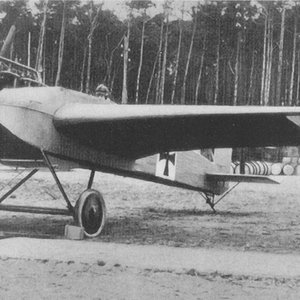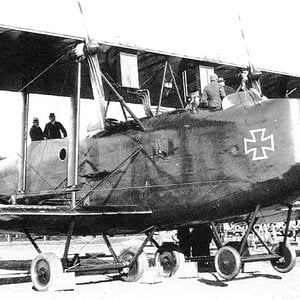Navigation
Install the app
How to install the app on iOS
Follow along with the video below to see how to install our site as a web app on your home screen.
Note: This feature may not be available in some browsers.
More options
You are using an out of date browser. It may not display this or other websites correctly.
You should upgrade or use an alternative browser.
You should upgrade or use an alternative browser.
Sturdy fuselage consisted of four main wooden spars arranged on wooden frames and stapled and reinforced cables and frame of steel tubes. Floors and walkways have been an integral part of the fuselage and gives additional strength. Twisting forces were a serious problem in the long coated canvas types of aircraft fuselages early company Staaken, but the R-Class car production DFW them covered with canvas plywood fuselage had in this respect is no problem. The internal layout was typical, consisting of nasal machine-gun position, then a spacious cabin for two pilots and a separate cab commander rear starboard. Under the cab was a regular radio station, then pass leading through the engine room. The roof was recently installed with windows that could be opened for extra ventilation. Next to the stern were the upper and lower machine-gun positions.
Tricycle wings were built of wood and suspension the inside in compression steel tubing and double ropes. Internal racks are made of steel tubing and streamlined braces between the wings were of the double ropes. Lower wings have cross V and had a slot in the trailing edge to provide work pusher propeller. Balanced ailerons were installed only on the upper wing. The empennage was a biplane design: a central keel and the lower tail fin was integrated with the fuselage and both were equipped with stabilizer elevators. Front axle flatbed dubbed as rudders and rear rack. All control surfaces tail balanced.
Tricycle wings were built of wood and suspension the inside in compression steel tubing and double ropes. Internal racks are made of steel tubing and streamlined braces between the wings were of the double ropes. Lower wings have cross V and had a slot in the trailing edge to provide work pusher propeller. Balanced ailerons were installed only on the upper wing. The empennage was a biplane design: a central keel and the lower tail fin was integrated with the fuselage and both were equipped with stabilizer elevators. Front axle flatbed dubbed as rudders and rear rack. All control surfaces tail balanced.








